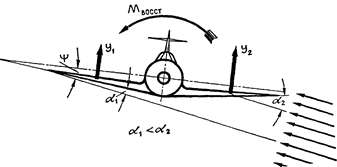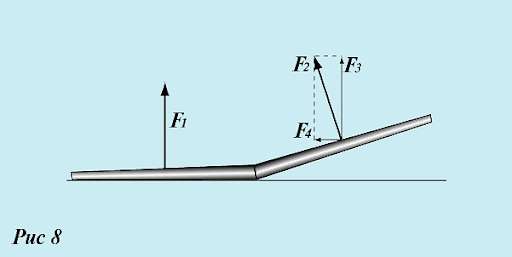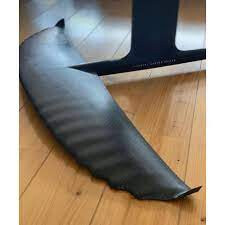Friends, please explain to a beginner why the V bend of the wing is directed downward? Not up like classic gliders. In aviation, wingtips raised up provide self-stabilization of the airframe. Why is everything different here?
Hydrofoil:
Airplane:


Friends, please explain to a beginner why the V bend of the wing is directed downward? Not up like classic gliders. In aviation, wingtips raised up provide self-stabilization of the airframe. Why is everything different here?
Hydrofoil:
Airplane:


Hi, you picked a photo of the front wing where there is too much downward curvature. Here’s a photo https://www.mantafoils.com/onlinestore with the wing tips horizontal.
This shows that the shape of the wingtip is probably just an attempt by the manufacturer to differentiate itself from the competition. So it is very likely that these wings are copied by all manufacturers (all in one), just change the curve a little and add a lot of soaring words. So all the current wings are one huge improvisation, not the result of scientific research.
So you can bend the ends of the wings up slightly and it will most definitely work too.
I agree with you Dynamic about a pseudo copies.
The only that is out of this is the unique design of the Takuma Kujira, that I use and I simply love it.
That is, until now, no one who understands aerohydrodynamics has designed the right wing? And this is all the result of copying amateur designs?
From the aerodynamic point of view of a conventional airframe, these wing designs look odd to me … And I can’t figure out why they were designed that way. There is no stability here.

And what does such a leading edge design give? What characteristics does it improve when flying?
Or does it just look cool?
And by the way, here the transverse V of the wing is also the opposite. And directed downward.
That is not true. The fact that chinese manufacturers copy the design does not mean nobody knows how to design a wing. I am sorry to be this guy, but Dynamik has been insisting on his expertise and saying how everyone else has no clue for a long time, yet he still has to show something revolutionary in the forum.
Back to the topic, as you say, from the hydrodynamics point of view, adding anhedral will decrease the stability. If you look here, https://youtu.be/sLHkqBevTGQ?t=169 , you’ll find the opinion of a guy who’s tried dozens of foils. What he says makes sense, the anhedral induces a yaw rotation when you roll the board, which helps a lot during turns, it “couples” the two axis. Basically it becomes like a bycicle, when you lean, it automatically changes your course. Without it, it becomes harder to change direction, the board wants to stay in the same course, even if you are falling sideways.
As I said, this makes sense and I trust this guy due to his experience, but i cannot confirm/deny what he says since i have not tried enough foils to say something solid on the topic.
That is, if the transverse V is directed upward like in classic gliders, will it make the hydrofoil too stable and at the same time interfere with turning?
even if it flies on water, IMO the dynamics are closer to a bike than to an airplane. So what you define as stability will change.
Imagine you lock the steering of a bike, it’ll go in a very straight line, but you’ll fall sideways unless your balance is very very good. In an vehicle where the CG is way higher than the contact points/center of lift (wheels/foil) , this induced yaw will create a centrifugal force that should avoid falling sideways.
again, this is just my opinion based on my limited experience.
Are there experts on this forum who can professionally talk about traditional forms of hydrofoils? Maybe from manufacturers? Aerohydrodynamic engineers?
Why are the wing shapes and what is the reason? I have not found any theory on this score.
I’ve heard the downward facing wingtips are often for safety: to avoid people cutting their feet on sharp edges when swimming near the foil.
You will also notice it looks like a seagull’s wings, which I believe have been shown to be high efficiency aerodynamic configuration for its mission profile. (Can’t find the reference paper).
Turbecles: these are implemented to allow foils to operate at high angles of attack by inducing turbulence off the leading edge and over the suction surface to keep the boundary layer energized and keep it from separating (stalling the foil). In my opinion they don’t belong on a hydrofoil surfboard unless you are really doing some high AoA turns / stunts.
The wing, tail design for these hydrofoils is very similar with conventional aircraft design and should be easy to find in textbooks related to aircraft design and aerodynamics. The actual foil profile will be slightly different as in hydrodynamics you need to manage cavitation on the suction surface, and so you’ll see foils like the Eppler series or H105 being used in place of conventional NACA foils.
Otherwise the concepts are similar: you’ll see the racers using high aspect ratio, low surface area, high efficiency wings which are designed for high speed, low drag, but are subject to stall easily and can be difficult to maneuver. Cruising foils will be larger, slower speed, lower aspect ratio, more stable, less subject to stall. The same way you would compare an ASK-21 glider to a Cessna 172.
Good luck on your quest for information!
Hi,
I would also say to add instability. Unlike an aircraft efoils have a skilled person on top, continuously adjusting the center of mass. This allows you to get away with a less stable design.
So why would you want instability? Maneuvering aggressively and all the thrills that come with it. Much, much quicker turns! etc…
Hope it helps!
The main reason not to have an upward bending wing is ventilation which usually leads to a crash and face plant.
Yes, I think so. After all, copying wings is very easy, inexpensive and their efficiency is considered sufficient (satisfactory).
This effect works at high angles of attack. When the whale flaps its fins. In our case, such regimes do not arise. And I think that such a construction has no meaning. These are all unnecessary constructive difficulties.
Having a wing with 5% higher CL and delayed, more gradual stall is great for our application. A hydrofoil must first “take off” from the water. So having these characteristics will help you take off with a smaller wing. It’s like an integrated flap in your wing, but without moving parts. A good deal if you ask me.
Which means that once you’re flying at cruise speed, you don’t have to carry around a huge area that you only needed for take off. For wingfoiling/foil surfing, it’s even more interesting since you’ll find yourself pumping lots of times, so knowing that stall is not sudden and the wing can give you the max lift at a higher range of AoA, is a very good feature.
A bit off topic. I have a PhD in the field. Besides the very narrow knowledge that it gave me (not it hydrofoils), one the most valuable lesson i got from these years is that there are lots of very smart people working in every possible field you can think of. So getting into a new topic and assuming everyone is dumb there is not gonna get you anywhere.
@pablo_foil
Which wing do you consider optimal for easy takeoff and hydrofoil cruising? No acrobatic studies. What is the profile and shape in plan? What is the wing area? I would be very glad to have a detailed answer.
You can start building your e-foile right now, you don’t need any theories to do it. You will learn a lot of theoretical information as you build it anyway. The main part of the e-foil that ensures its hydrodynamic efficiency is only the propeller and the front wing. To build a v1 e-foil you just need a proven commercial propeller and a commercial wing, you don’t need to know any theories, just pay for it. Later (when upgrading the e-foil to v2) you can easily replace this propeller and wing with a much better one.
Which wing and propeller are considered the most optimal for V1? For the entry level?